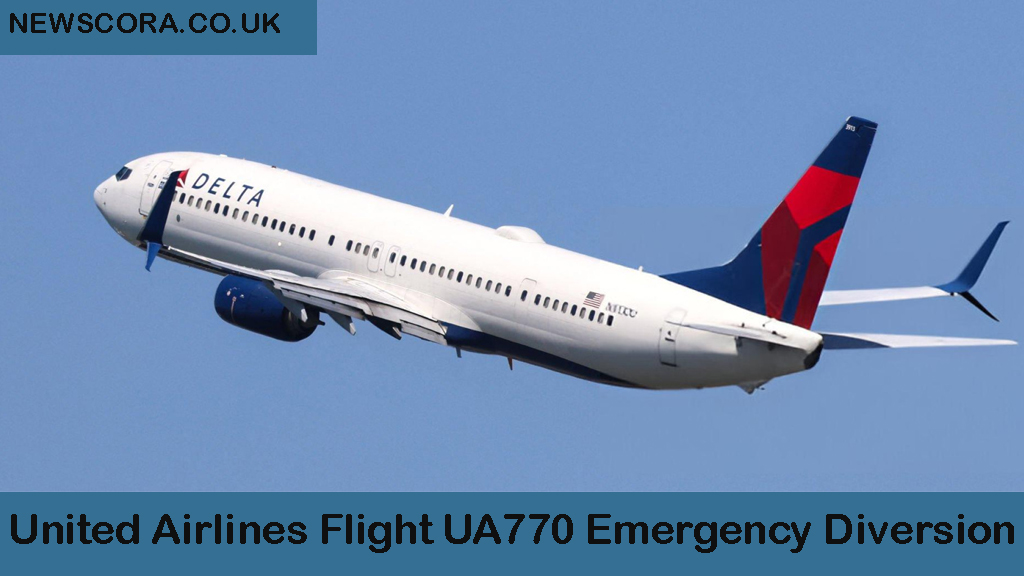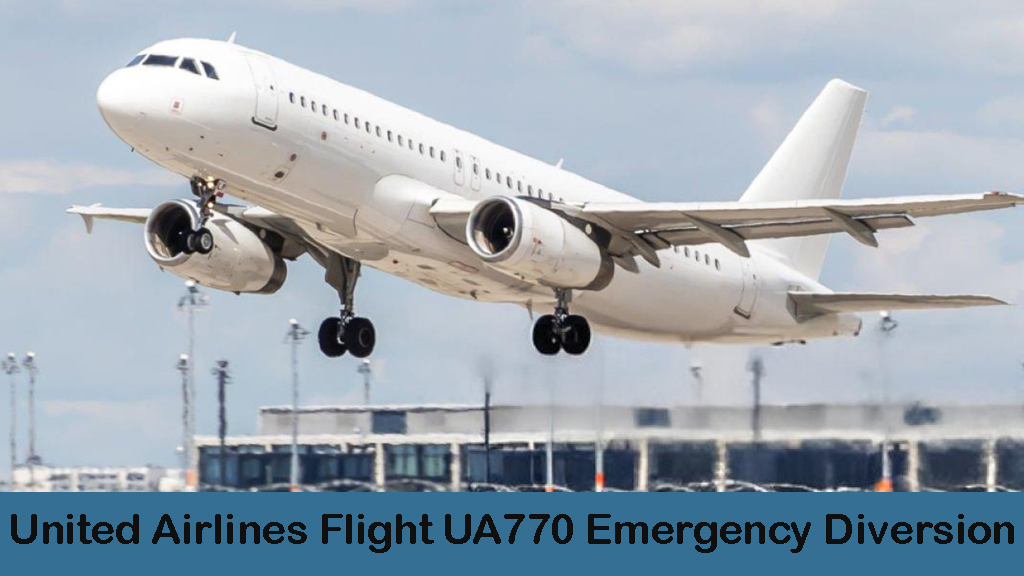Commercial air travel is one of the safest forms of transportation, but occasionally, a flight may face unexpected challenges that require quick decisions. This was the case with United Airlines Flight UA770, which experienced an emergency diversion earlier this year.
While the incident raised questions among travelers, it also highlighted how aviation systems, well-trained crews, and safety protocols work together to protect passengers. In this article, we’ll break down exactly what happened on UA770, explain why diversions occur, describe how crews prepare for them, and share practical tips for passengers.
Quick Overview of UA770
| Detail | Information |
|---|---|
| Airline | United Airlines |
| Flight Number | UA770 |
| Scheduled Route | Barcelona (BCN) → Chicago (ORD) |
| Aircraft Type | Boeing 787-9 Dreamliner |
| Incident Type | Emergency Diversion |
| Diversion Airport | London Heathrow (LHR) |
| Date of Diversion | May 27, 2025 |
| Reason for Diversion | Cabin pressurization anomaly (precautionary) |
| Passenger Status | All passengers landed safely, no injuries |
What an Emergency Diversion Means in Commercial Aviation
An emergency diversion occurs when a pilot decides to land at an alternate airport rather than continuing to the planned destination. The decision is always based on safety first, with close coordination between:
- The flight crew
- Air traffic control
- The airline’s operations center
Common causes include:
- Medical emergencies involving passengers or crew
- Technical or mechanical alerts requiring inspection
- Weather hazards near the destination
- Security or unruly passenger situations
In UA770’s case, the issue involved a cabin pressurization warning, a situation that crews are trained to treat with the highest priority.
Timeline of the UA770 Diversion
- Departure – UA770 departed from Barcelona on time, heading toward Chicago.
- Mid-Flight Detection – The cockpit crew identified a potential pressurization anomaly. While the cabin remained stable and masks were not deployed, the system triggered precautionary protocols.
- Emergency Declaration – The pilots issued a Squawk 7700, the universal transponder code for a general emergency.
- Rerouting – After consulting with air traffic control and United’s dispatch, the crew diverted toward London Heathrow, one of the best-equipped airports for handling wide-body aircraft emergencies.
- Safe Landing – The Dreamliner touched down on runway 27R at 4:55 PM BST, with emergency vehicles on standby.
- Post-Landing Procedures – Passengers disembarked calmly, received assistance, and were rebooked or accommodated.

Reasons a Flight Might Be Diverted
Medical Emergencies on Board
According to research in the New England Journal of Medicine, about 1 in every 600 flights has a medical issue. Airlines carry medical kits and defibrillators, but in serious cases—such as heart attacks or allergic reactions—a diversion allows for hospital care.
Technical or Mechanical Issues
Even with strict maintenance schedules, aircraft sensors sometimes detect anomalies. These alerts often turn out to be minor, but airlines prefer to err on the side of caution. UA770’s pressurization alert is a perfect example of this safety-first approach.
Weather-Related Diversions
Thunderstorms, strong crosswinds, or low visibility at the destination can force pilots to choose an alternate airport.
Security Situations
Unruly passengers or threats on board may also require a quick diversion. Aviation authorities worldwide take these cases very seriously.
How Pilots and Crew Prepare for Diversions
United Airlines pilots and crews undergo rigorous training that includes:
- Simulator sessions practicing emergency diversions to different airports
- Rapid descent training for loss of cabin pressure
- Medical emergency response drills
- Crew Resource Management (CRM) to ensure clear communication between pilots, cabin crew, and ground control
This training ensures that, when unexpected issues arise, crews remain calm and passengers stay safe.
Passenger Experience During a Diversion
For those on board, the diversion was handled with professionalism. Typically, passengers will:
- Hear a calm announcement from the cockpit
- Notice a change in course or altitude
- See flight attendants preparing the cabin for landing
- Be met by emergency vehicles as a precaution
Although diversions can cause delays and stress, they’re also proof that safety systems are functioning as designed.
After Landing at Heathrow
Once UA770 landed safely, several things happened:
- Emergency services stood by but were not needed for medical intervention.
- Passengers disembarked via a jet bridge.
- United Airlines coordinated rebooking, accommodations, and refreshments.
- Engineers inspected the aircraft to confirm whether it could continue service.
This process is standard practice whenever a diversion occurs.
Communication from United Airlines
United issued a short public statement confirming the diversion was due to a precautionary pressurization concern, emphasizing that passenger safety was never compromised.
Updates were shared via:
- United’s Travel Notices page
- Official social media accounts
- Flight tracking platforms such as FlightAware
Broader Impact on Airline Operations
An emergency diversion affects more than just one flight:
- The aircraft’s next scheduled service may be delayed or reassigned.
- Crew scheduling can be disrupted due to flight-hour regulations.
- Passengers with onward connections often need rerouting.
READ ASLO: маријин трг Belgrade: History, Culture, and Modern Charm of the Iconic Square
United’s operations center works to minimize these ripple effects across the schedule.
Lessons for Travelers
- Keep essentials in your carry-on – medication, chargers, travel documents.
- Stay calm and trust the crew – they are trained for these situations.
- Know your rights – U.S. law doesn’t guarantee compensation for safety-related diversions, but airlines may provide goodwill accommodations.
- Consider travel insurance – this can cover unexpected expenses from delays or diversions.
Data on Diversions in U.S. Commercial Aviation
According to the FAA, a few dozen diversions occur daily out of tens of thousands of flights in U.S. airspace. Almost all end safely, with crews acting out of caution rather than necessity. This underscores aviation’s strong safety cultur. offical website
Conclusion
The diversion of United Airlines Flight UA770 shows how multiple safety layers in aviation protect passengers. From early detection systems to highly trained crews and responsive ground teams, everything worked exactly as intended.
For passengers, it was an inconvenience—but also a reminder of why commercial aviation remains one of the safest ways to travel.
Frequently Asked Questions
Q1: What caused the diversion of UA770?
A cabin pressurization anomaly prompted the crew to divert as a precaution.
Q2: Where was the flight originally going?
It was scheduled to fly from Barcelona to Chicago.
Q3: Where did it land after the diversion?
The aircraft landed safely at London Heathrow Airport.
Q4: Was anyone injured on the flight?
No. All passengers and crew were safe, and no injuries were reported.
Q5: Did oxygen masks deploy during the flight?
No, the cabin remained stable, and masks were not needed.
Q6: What type of aircraft was used for UA770?
A Boeing 787-9 Dreamliner.
Q7: How did passengers continue their journey?
United rebooked affected travelers and provided accommodations where necessary.
Q8: Does an emergency diversion mean the flight was unsafe?
Not at all. Diversions often show the system is working properly—catching issues before they escalate.
Q9: How common are emergency diversions in aviation?
They are rare, but they do occur. Out of tens of thousands of daily flights, only a small fraction divert.
Q10: Where can passengers check real-time updates about flights like UA770?
The most reliable sources are FlightAware, United’s official website, and the airline’s verified social media channels.
Click for more amazing info. News Cora

